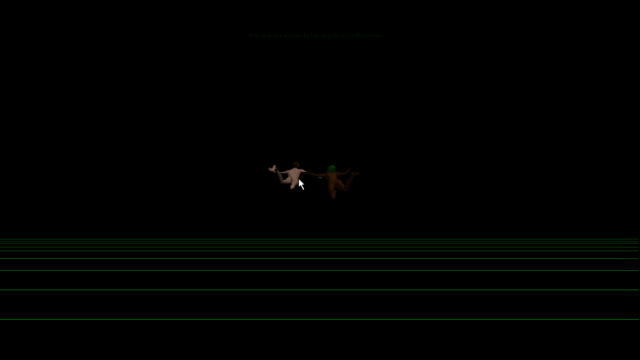The covid-19 museum closures have made abundantly clear that accession committees and the web’s corporate overlords don’t have much love for net art. While museums spent the past decade and hundreds of millions of dollars colonising the earth and sky to make space for hoards of painting and sculpture, the web’s billboard-plastered renovations have threatened to steamroll it into oblivion. (Nowhere is this more obvious than Google’s Arts & Culture, an online repository for work from 2,000 museums and collections, whose media include “vitreous enamel,” but not “video”–much less “HTML” or “gifs.”)
They’ve put their collections online, but a .png of a Mexican mural stimulates about as much as a postage stamp; we need art that comes alive on browsers, and you’re going to have to do a little off-roading into the diaspora of blogs, strange domains, and obscure YouTube channels to find it. While scanning the web for online artworks for socially distanced consumption, Gizmodo wondered: how did net artists find net art? Which works led them to fire up their terminals and Photoshop canvases and build out this fragile universe for the public? For a series of days, we’ll be sharing picks from the community of art-makers and caretakers who’ve created and preserved net art for the world, free of charge.
Black Net.Art and Love Letter Web Pages
“We wanted to see what an artwork could say to this question of who are we when we are online and ask questions about where Blackness (race and culture) lives,” Mendi + Keith Obadike told Rhizome in 2017.“Is it in the body or somewhere else?”
They were referring to their project Black Net.Art, a series of actions from 2001 to 2003, but that question feels even more prescient today when all netizens’ corporeal information is monetizable data. They’d identified that friction back when corporations were still staking out their territory and before social media had fenced in its walled gardens. They pointed out to Rhizome that, in the ‘90s, the language of the web was already that of “western exploration colonialism, from Netscape Navigator, Internet Explorer, Ebay.com, Amazon.com.”
In Black Net.Art, Keith auctioned his blackness on eBay. They offered “savvy e-businesses” a service in which they would convert their unseen customers’ and employees’ skin tone into hexadecimal code, titled “The Interaction of Coloreds” — a play on Josef Albers’ The Interaction of Colours.
Mendi published a story about a white “mentor,” which at first appears as scattered fragments like “he was a pretty nice guy” and “he praised my work”; when you hover over the blanks, paragraphs detailing his abuse reveal themselves in pink.
It was formatted as a word processing document, but the impulse to self-edit feels second nature to a world in which many of us spend more time typing thoughts than saying them.
In the subsequent years, their body of work has sprawled into expansive explorations of race migration, social hierarchies, AfroFuturist myths, and works by intellectual forbearers through video, language, code, sound, opera which have inspired volumes of essays elsewhere.
They recommended checking out a number of works, including Photoshop paintings by Ethiopian-American artist Acha Debela and Adrian Piper’s Calling Cards (pre-typed comebacks to racist and sexist remarks) as inspiration for “interactivity.”
On the net artist that impacted them most, they wrote: “While we think of them as our contemporaries and not people we knew about before we were making internet art, we always loved the poetic visuals and storytelling of Entropy8Zuper (Auriea Harvey and Michael Samyn).”
A prime example of such poeticism is skinonskinonskin, a 1999 series of private love letters in the form of interactive web pages, which the couple sent to each other while living in different countries, after meeting on the private network hell.com. They later released the series as a single pay-per-view website for a knowing audience.
Skinonskinonskin survives as an emulation on Rhizome. Dithered bodies flash across dark pages, to the muted heart thumping through an ultrasound. Their heads loll on the floor, following your cursor; two tiny animated bodies flying through webspace together; a blank webpage is a windowpane, with hands traced over each other on white. Out of hard code, they conjured chimeras. On a web that was to be made into a corporate data mine, they built a secret garden.
